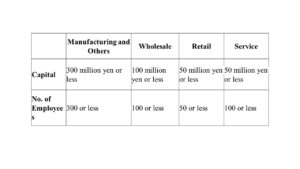Micro, Small, and Medium Enterprises (MSMEs) are enterprises engaged in the production, manufacturing, and processing of goods and commodities, wherein the Investment in plant and machinery or equipment and the Annual Turnover is within the limit defined by the legislation. For Indian economy, the MSME sector has become prominent, significantly contributing to exports, generation of employment, entrepreneurship development, and the socioeconomic development of rural and backward areas. It is also considered to be the spine of the Indian economy, wherein 96% of the industrial units are under the control of MSMEs.
The contribution of the MSME sector to the country’s manufacturing output, employment, and exports is remarkable. According to the Ministry of Statistics & Programme Implementation, the share of MSME Gross Value Added (GVA) in the all-India Gross Domestic Product (GDP) for 2021-22 was 29.2%. Additionally, the share of MSME manufacturing output in the all-India manufacturing output during 2021-22 was 36.2%. MSMEs have provided employment to around 17 crore people. In the last 6 years, they have increased the employment option by almost 110% every year. Furthermore, the contribution of MSMEs to the country’s exports was 43.59% in the financial year 2022-23.
After independence, recognition was given to micro and small enterprises as effective tools for increasing employment opportunities in the economy. The Small Industries Development Organisation (SIDO) was established in 1954, and it is the Apex Body for promoting the growth and development of MSMEs in the country. Between 1948 and 1991, several supportive measures were implemented to develop MSMEs. These measures included the reservation of items for exclusive manufacture, priority access to bank credit, excise exemptions, infrastructure development, and the establishment of institutes for entrepreneurial and skill development. To train youth entrepreneurship skills, institutes known as Small Industries Service Institutes were set up across India. These institutes provided essential technical services for MSEs.
Later, in the 1990s, the Small Industries Development Bank of India (SIDBI) and the Technology Development and Modernisation Fund were established to finance technological developments in the MSME sector. In 1999, the Ministry of Small-Scale Industries and Agro and Rural Industries was created to regulate and oversee the MSME sector, which later split into two separate ministries. These two ministries were then consolidated into the Ministry of Micro, Small and Medium Enterprises (MSME) on May 9th, 2007, as a result of a change in the Government of India (Allocation of Business) Rules, 1961. The MSMEs in India are now governed by the Ministry of Micro, Small and Medium Enterprises, which is an apex executive body responsible for regulating this sector. The Ministry regulates the MSME sector, and designs policies and schemes that enable the development of MSMEs.
The Micro, Small, and Medium Enterprises Development (MSMED) Act, 2006 is a comprehensive legislation aimed at the development and regulation of the MSME sector, which came into effect in October 2006. Based on their investments in plant and machinery or equipment, MSMEs are further classified as micro, small, or medium enterprises.
According to the MSME Act Micro, Small and Medium enterprises are determined based on the following criteria:
Time and again, through the economies around the world, we have seen how the MSME (or SMEs) have proven to be the biggest sector conducting business all over the world. They have established themselves to be the backbone of any economy, taking it from the category of developing to developed economy. We will briefly look into two developed economies of the world, who, through their SME sector have become super powers around the globe.
MSME in Germany:
In Germany, the SMEs are referred to as the ‘Mittelstand.’ Mittelstand companies employ 56 per cent of all workers, provide crucial training, and significantly contribute to corporate tax revenues in Germany. While Germany is primarily known for offering high-quality products that require cutting-edge engineering, it might seem that these products are produced by giant German corporations like BMW, Bosch, and Siemens AG. However, a substantial portion of the manufacturing is actually done by the Mittelstand.
Approximately 97% of German exports are generated by SMEs. According to the European Commission, SMEs are defined as companies with up to 250 employees, a maximum balance sheet total of 43 million euros, and a maximum turnover of 50 million euros. SMEs contribute significantly to the innovative capacity of German companies, accounting for roughly one-third of it. Specifically, 32% of innovation expenditure and 35% of R&D spending in the German economy come from SMEs. This innovative capacity is largely driven by firms that consistently engage in research and development. However, these figures are constantly evolving due to the increasing number of innovative start-ups emerging in Germany.
MSME in Japan:
In the year 2021, the SMEs in Japan accounted for 99.7% of the total business, employing 33 million people, which amounted to almost 69.7% of the private sector labour force. The technological development, which is a pride for Japanese economy, are based on these SMEs. In order for larger companies to provide products and services, they need the support of SMEs. The first MSME enterprise agency was established in Japan in 1948 to prevent the concentration of economic power and foster healthy SMEs. Subsequently, in 1963, the SME Basic Act was enacted. SME policies in Japan have been modified over time to adjust to changing economic situations. The Small and Medium Enterprise Basic Law was fundamentally revised in 1999. Through this amendment, SMEs were defined for each industry sector. This act classifies SMEs based on the capital of the enterprise and the number of employees as follows:
Conclusion:
The economies of Germany and India are very similar with respect to the predominance of Small and Medium Enterprises (SMEs). Indian Government has taken numerous measures in order to promote the growth of this Sector, including MSME Samadhaan, Udyog Aadhaar, Mudra, ZED Scheme, Make in India, Stand-Up India. The role of MSME in India is widely appreciated, as they provide employment opportunities, contribute to manufacturing and exports, support innovation as well as entrepreneurship. Seeing the above examples, it can be said that with the promotion and incentives provided by the Government of India, MSMEs will take the nation’s economy to greater heights.









